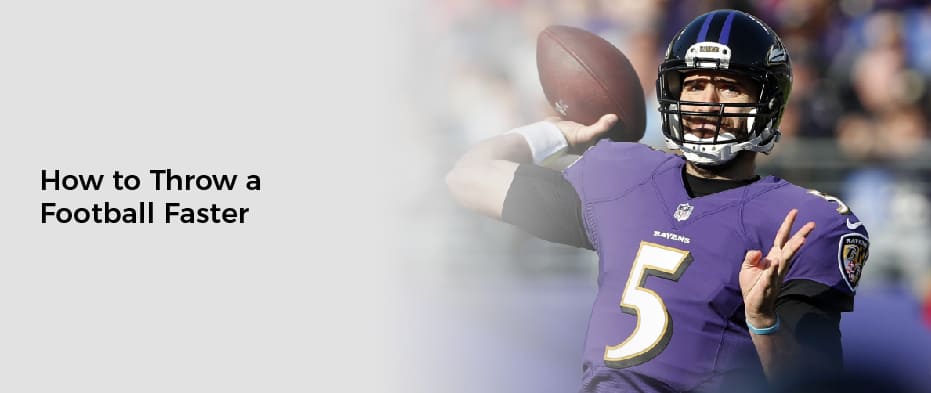Ever wondered why soccer players get to take a break in the middle of an intense match? how long is soccer halftime – this question pops up frequently among new soccer enthusiasts and casual viewers alike.
Whether you’re just getting started with watching soccer or want to understand the game better, knowing about halftime is crucial to understanding the sport’s flow and strategy.
Soccer halftime is a standardized 15-minute break that occurs exactly halfway through a regulation match.
Think of it as the game’s intermission – a strategic pause that serves multiple purposes beyond just giving players a chance to catch their breath.
This break comes between two 45-minute periods of play, creating the perfect opportunity for teams to regroup, strategize, and prepare for the second half of the match.
How Long is Soccer Halftime?

The beauty of soccer halftime lies in its simplicity and consistency. Unlike some sports that have multiple shorter breaks or timeouts, soccer concentrates all its rest time into one significant pause.
This creates an exciting rhythm to the game, where teams must make the most of this precious 15-minute window to turn things around if they’re losing or reinforce their strategy if they’re ahead.
Where Halftime Fits Into a Soccer Game?
Understanding where halftime fits into the larger structure of a soccer match is essential for appreciating its importance. Let’s break down the complete game structure in detail:
Standard Match Structure:
- Pre-match Activities
- Team warm-ups (typically 30 minutes)
- Equipment checks
- Coin toss for field sides and kick-off
- First Half
- 45 minutes of continuous play
- Additional injury time (if needed)
- No scheduled breaks or timeouts
- Halftime Break
- 15 minutes maximum duration
- Teams switch sides of the field
- Tactical discussions and rest period
- Second Half
- Another 45 minutes of continuous play
- Additional injury time (if needed)
- Culmination of the match
Here’s a detailed breakdown of a typical professional soccer match timeline:
| Time Period | Duration | Key Activities | Important Notes |
|---|---|---|---|
| Pre-match | 30-45 mins | Warm-ups, preparations | Teams inspect field conditions |
| First Half | 45 mins + stoppage | Active gameplay | Clock runs continuously |
| Halftime | 15 mins | Rest, strategy, recovery | Teams switch ends |
| Second Half | 45 mins + stoppage | Active gameplay | Substitutions often occur |
| Post-match | Variable | Cool-down, media | Only if needed |
Field Switch Importance:
- Weather Considerations
- Sun position and glare effects
- Wind direction and strength
- Rain impact on field sections
- Field Conditions
- Grass wear patterns
- Goal area conditions
- Any slope or unevenness
- Tactical Advantages
- Attacking direction preferences
- Fan support location
- Bench-side communication
Halftime During Extra Time
When matches require a winner (like in knockout tournaments), extra time comes into play. This period has its unique halftime structure:
Extra Time Organization:
- Duration: Two 15-minute periods
- Mini-Halftime: 1-minute break between periods
- Purpose: Quick refreshment and minimal tactical adjustments
- Rules:
- Teams must stay on the field
- No extended discussions
- Limited substitution opportunities
Extra Time Halftime Specifics:
- Extremely brief compared to regular halftime
- Focused solely on essential needs
- Usually just enough time for:
- Quick hydration
- Brief tactical instructions
- Necessary equipment adjustments
- Emergency medical attention if needed
The Length of Halftime in Soccer
The 15-minute halftime duration is carefully regulated and standardized across professional soccer. Let’s explore why this specific timeframe was chosen and how it’s managed:
Official Regulations:
- Maximum Duration: Strictly 15 minutes
- Minimum Duration: Not officially specified
- Referee Control: Only match officials can modify the length
- Timing Management:
- Starts when the referee signals the first half’s end
- Ends with second half kick-off whistle
- Includes all break activities
Practical Implementation:
- Teams typically use a full 15 minutes
- Referees monitor time strictly
- Additional time is rarely granted except for:
- Emergencies
- Severe weather conditions
- Stadium technical issues
- Security concerns
Length of Halftime at High School Level Soccer
Youth and educational soccer operates differently from professional matches, with adjusted timings to suit different age groups and skill levels:
Age-Based Halftime Duration Table:
| Level | Game Length | Halftime Duration | Special Considerations |
|---|---|---|---|
| Professional | 90 mins | 15 mins | Full standard brake |
| College | 90 mins | 15 mins | NCAA regulations |
| High School | 80 mins | 10 mins | State variations |
| U-13 to U-15 | 70 mins | 10 mins | Development focus |
| U-9 to U-12 | 60 mins | 5-8 mins | Basic rest period |
| U-6 to U-8 | 40 mins | 5 mins | Simple break |
Youth Soccer Considerations:
- Physical Development
- Age-appropriate rest periods
- Reduced physical demands
- Proper recovery time
- Learning Opportunities
- Basic tactical discussions
- Skill development focus
- Positive reinforcement
- Safety Factors
- Weather adaptation
- Hydration emphasis
- Injury prevention
Benefits of Halftime
The halftime break serves multiple crucial purposes that benefit both players and teams. Let’s explore each major benefit in detail:
Allows a Team to Reset
The reset period during halftime is crucial for team performance and mental preparation:
Physical Reset:
- Recovery Benefits
- Muscle relaxation
- Heart rate normalization
- Temperature regulation
- Energy system replenishment
- Performance Optimization
- Reduced fatigue effects
- Improved second-half stamina
- Better injury prevention
- Enhanced movement quality
Mental Reset:
- Psychological Benefits
- Stress reduction
- Focus renewal
- Confidence rebuilding
- Team spirit reinforcement
- Strategic Reset
- Game plan adjustments
- Opposition analysis
- Performance evaluation
- Goal setting revision
Gives Time for the Coach to Discuss Tactics
Coaches utilize this precious time for crucial team management:
Tactical Adjustments:
- Formation Changes
- Player positioning
- Defensive organization
- Attacking patterns
- Set-piece strategies
- Individual Instructions
- Role clarification
- Specific matchups
- Areas for improvement
- Positive reinforcement
Team Management:
- Substitution Planning
- Player fatigue assessment
- Tactical switches
- Injury management
- Strategic changes
- Motivation and Leadership
- Team talks
- Individual encouragement
- Performance feedback
- Goal reminders
Opportunity for Hydration and Nutrition
Proper refueling during halftime is essential for maintaining peak performance:
Hydration Protocols:
- Fluid Requirements
- Water replacement
- Electrolyte balance
- Temperature regulation
- Hydration status check
- Drinking Strategies
- Personalized intake
- Optimal timing
- Type of beverages
- Amount guidelines
Nutrition Management:
- Quick Energy Sources
- Carbohydrate intake
- Energy gel consumption
- Fruit options
- Sports nutrition products
- Recovery Support
- Protein considerations
- Mineral replacement
- Blood sugar regulation
- Digestive timing
Time to Assess Any Potential Injuries
Medical staff use halftime for crucial health monitoring:
Injury Assessment:
- Physical Evaluation
- Muscle strain checks
- Joint mobility tests
- Impact injury assessment
- Fatigue monitoring
- Treatment Opportunities
- Quick fixes
- Taping and support
- Pain management
- Preventive care
Medical Decisions:
- Player Fitness
- Continuation ability
- Substitution needs
- Risk assessment
- Performance capacity
- Treatment Planning
- Immediate care
- Second-half monitoring
- Post-game recommendations
- Follow-up requirements
History of Halftime in Soccer: Why It Exists
The evolution of halftime in soccer has a fascinating history that shapes today’s game:
Historical Development:
- Original Purpose
- Rule standardization
- Fair play promotion
- Team adaptation
- Game flow management
- Evolution Factors
- Player welfare
- Commercial aspects
- Broadcasting needs
- Spectator experience
Modern Implications:
- Current Role
- Strategic importance
- Player recovery
- Entertainment value
- Commercial opportunities
- Future Considerations
- Time management
- Player welfare
- Game development
- Spectator engagement
FAQs:
- Q: Can halftime be extended beyond 15 minutes?
A: No, professional rules strictly limit halftime to 15 minutes unless there are exceptional circumstances like severe weather or security issues.
- Q: What happens if teams are late returning from halftime?
A: Teams can face penalties or disciplinary action for deliberately delaying the restart of play after halftime.
- Q: Are players required to leave the field during halftime?
A: No, players can stay on the field, but most teams prefer using locker rooms for privacy and better team discussions.
- Q: Can substitutions be made during halftime?
A: Yes, teams can make substitutions during halftime without counting against their in-game substitution opportunities.
- Q: How do youth soccer halftimes differ from professional games?
A: Youth soccer typically has shorter halftime breaks, usually 5-10 minutes, adjusted according to age group and game duration.
- Q: What activities are allowed during halftime?
A: Teams can conduct tactical discussions, treat injuries, hydrate, change equipment, and make substitutions during halftime.
Also Check:
Conclusion:
Halftime in soccer represents much more than just a break in play – it’s a crucial component that can dramatically influence the outcome of a match.
This 15-minute window serves multiple essential purposes, from physical recovery to tactical adjustments, making it an integral part of the beautiful game.
Understanding halftime’s significance helps us appreciate why it’s structured the way it is, from professional matches down to youth games.
While the duration may vary depending on the level of play, the fundamental purpose remains constant: providing teams with an opportunity to reset, refocus, and prepare for the challenges of the second half.
For players, coaches, and fans alike, halftime represents a pivotal moment in every match – a time when games can be won or lost through strategic decisions, proper recovery, and team management.
Whether you’re actively involved in the sport or just an enthusiastic observer, recognizing the importance of this break helps enhance your appreciation of soccer’s unique rhythm and strategic depth.








